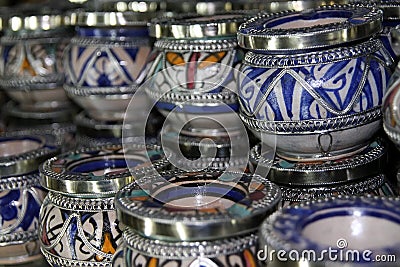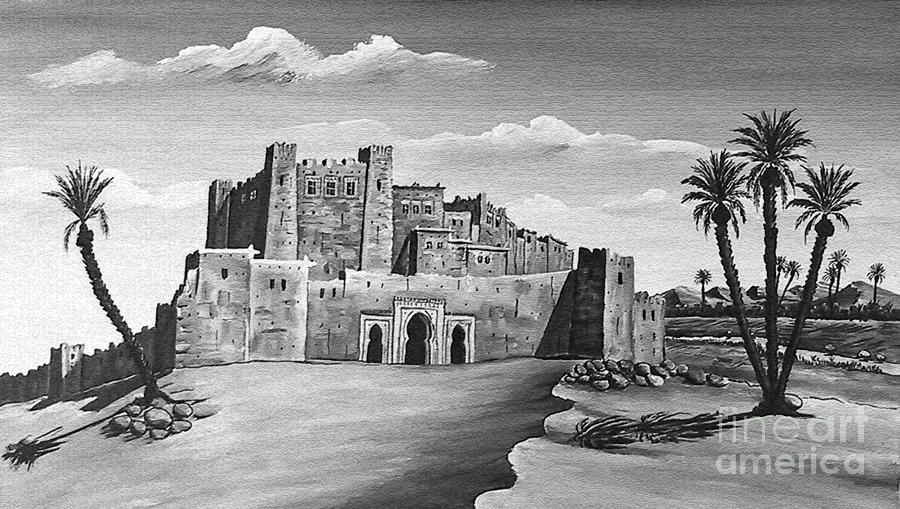Hiking and Trekking
Although rugged, the mountain ranges of Morocco are ideal for hikers and trekkers. The wild beauty of the Moroccan mountains attracts several hikers and trekkers. A network of stopovers including guides and monitors are available throughout these ranges. You can take a bus or opt for a collected taxi in order to reach to the starting point. A rental four-wheel drive can also be ideal to reach the starting point.
One of the most popular trek routes in the area is the route from Imlil, the beautiful and picturesque village to Jbel Toubkal, the highest peak of North Africa. The starting point to this route is about an hour's drive away from Marrakech. Small hotels, refuges and resting places can be found all through the trekking trail. Although trekking can be possible all through the year, April to October is considered to be the best time for trekking. Canyons and gorges become difficult to navigate during the storms, which can be avoided during this period.
More information about trails and refuges can be obtained from:
The Moroccan National Tourist Office or The Club Alpin Français, BP. 6178 Casablanca 01 Tel: +(212) 2 27 00 90 Fax: +(212) 2 29 72 92
Royal Moroccan Ski & Mountaineering Federation, Parc de la Lique, Arabe, BP 15899, Casablanca Tel: +(212) 2 203798 Fax: +(212) 2 474979
Horse Riding
One of the most ideal ways to explore the beauties of Morocco can be on horseback if you enjoy horse riding. You can cut across a trail along the white sandy beaches or through the sand dunes and date trees on horse back in Morocco that can provide you with an experience of a lifetime. The town of Tetouan is one of the best areas to sightsee riding a horse with its fascinating landscapes. Some of the other main riding centers are Agadir, Meknes, Rabat, Casablanca, Ouirgane, Ouida and Tangier.
Horses can be hired in Ad'Dahkla. Exploring the Kasbah Trail or the magnificent surrounding sub-Saharan region can be a wonderful experience on horseback.
Camel Trekking
A ride on the camel can be one of the most memorable experiences during your stay in Morocco. Although it may not be the most comfortable ways of exploring the country, it certainly will be one of the most unique one. Camel trek expeditions Morocco can be of one day or two weeks. September to February is the best time to opt for a ride on the camel. The Erg Chebbi sand dunes at Merzounga, the Draa Valley (Tinfou and Zagora) and the M'Hamid area are some of the most popular areas for camel riding. The ancient trans-Saharan camel caravan trade route stretching from Marrakech to Rissani can also be an exciting experience that combines the use of camels and land rovers. The journey takes twelve days to complete where you can travel down the historical trade route.
Rallying
Some of the greatest international automotive competitions are held in Morocco such as the Atlas and Paris-Dakar rallies. With over thousands of miles of tracks, interested individuals can choose from a number of challenging routes.
Mountain Biking
Some of the spectacular countryside can be explored only through mountain biking, on foot or on horseback. This off-road vehicle is undoubtedly one of the best ways to know Morocco with its deserts, beaches and inaccessible rugged mountain ranges.
Surfing
Surfing along the Atlantic waves or sliding along the snowy slopes of the Atlas or sliding through the sand dunes provide a number of options to choose from for all those who love surfing.
Royal Moroccan Surfing Federation: - Casablanca Tel: +(212) 2 259530 Fax: +(212) 2 236385
Water Sports
The Atlantic and Mediterranean coasts offer several kinds of water sports. Sailing, yachting, rowing, canoeing, windsurfing, scuba diving, deep-sea fishing and water skiing are some of the options tourists can choose from. For more information tourists may contact:
Royal Moroccan Sailboat Federation Rabat Tel: - +(212) 7 670956
Royal Moroccan Yacht Club Rabat: +(212) 7 720264 Mohammedia Tel: +(212) 3 322331
Royal Moroccan Water Skiing & Jetski Federation Casablanca Tel +(212) 2 274938 Fax: +(212) 2 474979
Aerial Sports
Several aeroclubs in Morocco provide aerial sport activities such as gliding, parachuting, aviation, deltaplane and hot air ballooning.
Royal Moroccan Federation for Light Aviation & Aerial Sports Rabat Tel: +(212) 7 708347 Fax: +(212) 7 706958
Golf
Golf has been a national passion of the country for a long time. Several golf competitions are arranged in Morocco, inviting expert golfers from all over the world. The annual Hassan II is the most famous trophy that is played at the Royal Golf Club, Dar Es-Salam, Rabat. Some of the other major golf courses are located in Cabo, Negro, Meknes, Tangier, Mohammedia, Casablanca and Ben Slimane. Also important are Agadir, El Jadida and Ouarzazate.
Fishing
Fishing in the quiet waters can be really enjoyable in Morocco. A number of lakes and rivers are found all over the country that provides a perfect setting for fishing. Pike, Trouts, Roach, Carp, Eels, Black Bass, Barbels and Perchs are available in plenty in these lakes and rivers. Usually the optimum fishing season is considered to be from May to June, although it depends largely on the species of the fish. Tourists can also indulge in deep-sea fishing with an abundance of sea perch, mullet, Bonitos, Chad and sea breams. Ports such as the Sakhla in Sahara and Mohammedia near Casablanca are fully equipped for deep-sea fishing, especially for fishing Tuna, Marlin and Swordfish.
Moroccan National Fisheries Office - BP 20300, Casablanca, Tel: +(212) 2 240551 Fax: +(212) 2 242305
Tennis
Exciting and challenging tennis games can be played at all major resorts of the country. Most of the tennis games are played on clay courts,












.jpg)






